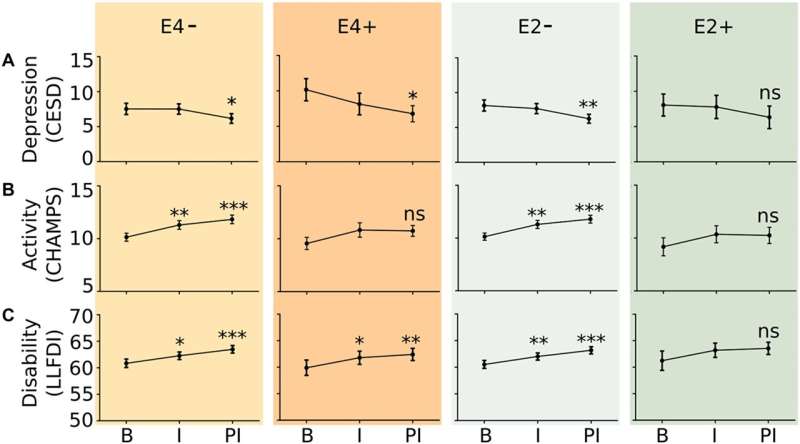Association of fall rate and functional status by APOE genotype in cancer survivors after exercise intervention

A new research paper titled "Association of fall rate and functional status by APOE genotype in cancer survivors after exercise intervention" has been published in Oncotarget.
Cancer treatment survivors often report impaired functioning and increased falls. Not all survivors experience the same symptom burden, suggesting individual susceptibilities. APOE genotype is a potential genetic risk factor for cancer treatment related side effects. Lifestyle factors such as physical activity can mitigate the effect of APOE genotype on measures of clinical interest in individuals without a history of cancer.
In this new study, researchers from the University of Texas MD Anderson Cancer Center, Oregon Health and Science University and Dartmouth-Hitchcock's Dartmouth Cancer Center tested the hypothesis that APOE genotype influences cancer treatment-related side effects and symptoms as well as response to exercise intervention.
"In the current analyses, the modulating effect of APOE genotype on functional status and symptom burden in response to exercise intervention was investigated in a subsample of trial participants," the researchers note.
Data from a subsample of a study of fall prevention exercise in post-treatment female cancer survivors aged 50–75 years old were used to conduct a secondary data analysis. APOE genotype was determined by serum sampling. Physical functioning, frequency of falls, and symptom burden were assessed using survey instruments.
Data from 126 female cancer survivors a median of 49 months out from cancer diagnosis were analyzed. APOE4 carriers trended toward a higher fall rate at baseline (p = 0.059), but after exercise intervention had a fall rate lower than E4 non-carriers both immediately after structured intervention (p = 0.013) and after 6 months of follow up (p = 0.002). E2 carriers did not show improved measures of depressive symptoms and self-reported disability after exercise intervention. E3 homozygotes showed increased self-reported physical activity after the 6 month exercise intervention, but E4 and E2 carriers did not.
The researchers conclude, "The study findings suggest that APOE genotype may be associated with presence and severity of cancer treatment-related side effects and symptoms and also influence the response to exercise-based interventions in cancer survivors."
More information: Gwendolyn J. McGinnis et al, Association of fall rate and functional status by APOE genotype in cancer survivors after exercise intervention, Oncotarget (2022). DOI: 10.18632/oncotarget.28310




















